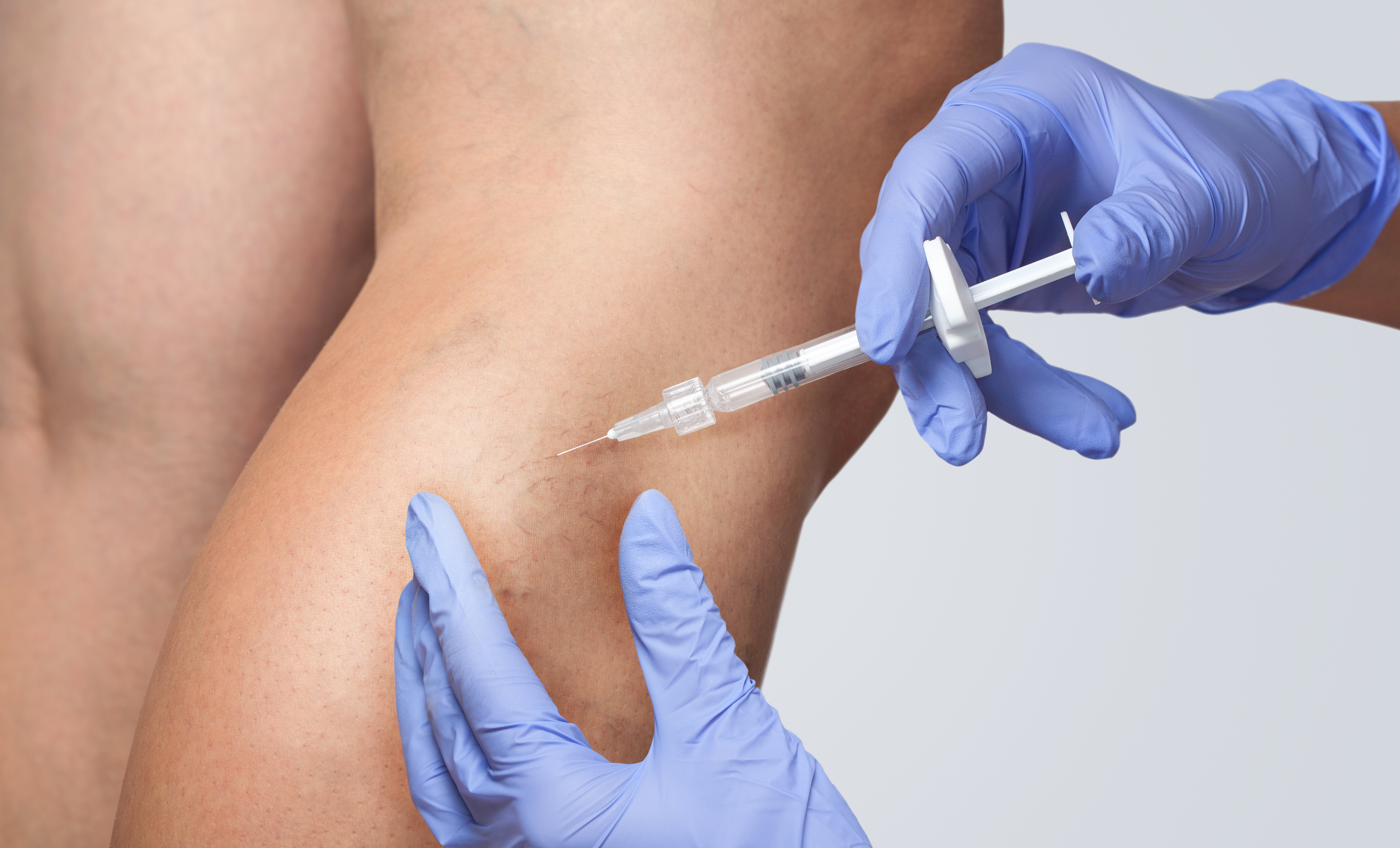What Is Sclerotherapy?
Sclerotherapy is an effective minimally invasive option for the treatment of varicose veins and spider veins. The procedure involves injecting a special solution, known as a sclerosant, directly into the affected vein. Upon injection, the sclerosant solution causes the vein to scar and collapse; the blood in the vein is rerouted to other healthy veins.
Over time, the collapsed vein is broken down, absorbed, and eventually fades away. Often the preferred method of treatment for addressing smaller spider veins, it’s estimated that 80% of the vein can be cleared up with singe sclerotherapy treatment.
Sclerotherapy Procedure
A sclerotherapy procedure generally takes between 15 to 90-minutes, depending on the size and number of veins being treated. Since a sclerotherapy procedure is non-surgical, it does not require anesthesia as part of the treatment and is a fairly pain-free procedure.
After cleaning and sterilizing the location to be treated, a tiny needle is inserted directly into the vein and a sclerosant solution, or sclerosant agent, is injected into the vein being treated. While most providers use a sclerosant containing sodium tetradecyl sulfate, it’s also common to use hypertonic saline solutions, glycerin, or polidocanol (Varithena).

Upon injection, the solution generally results in an irritation that induces enough swelling to effectively cut off blood flow in the vein, causing it to shrink and collapse before scaring and eventually fading away.
Considered the preferred method of treatment for smaller veins, and especially spider veins, sclerotherapy can also be used as an option to treat larger veins in the thighs and calves. Sclerotherapy is generally used on superficial veins, which are the veins directly below the skin’s surface. When veins are located far below the skin’s surface, your provider might opt for a method of sclerotherapy known as ultrasound guided sclerotherapy; a similar technique to traditional sclerotherapy, but completed using ultrasound as a part of the treatment procedure.
Smaller veins treated during a sclerotherapy procedure typically take a few weeks to a month to completely fade away. Larger veins, like those found in the legs, tend to take longer to fade after sclerotherapy, most clear up anywhere between two and six months; some of these larger veins may also require several sclerotherapy treatments to realize full results.
Sclerotherapy Cost
Sclerotherapy treatment for spider veins, tends to cost less than other minimally invasive treatment options, and depends on the size and number of veins that need to be treated. Since this is not a medically necessary procedure, the procedure is not covered by insure. Typically the spider vein sclerotherapy sessions cost about $400.
Read This Next
What Is Sclerotherapy? Sclerotherapy is an effective minimally invasive option for the treatment of varicose veins and spider veins. The procedure involves injecting...
Read MoreWhat Is Laser Treatment For Spider Veins? Laser treatment for spider veins has been found to be one of the quickest and most effective procedures to treat and completely...
Read MoreHemosiderin staining is a byproduct of the breakdown of hemoglobin and iron leaking out from veins in the legs. Hemoglobin is found in red blood cells and serves to transport...
Read MoreSpider veins, or telangiectasias, are a group of dilated superficial veins that look like a bluish or reddish spiderweb near the surface of your skin. These small superficial...
Read More





